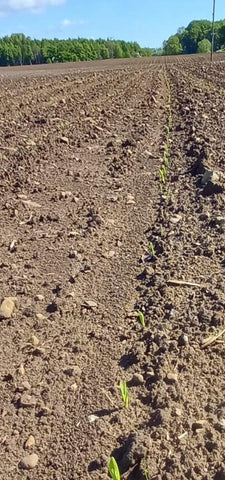When Should I Reseed?
The process of reseeding and knowing when to carry it out can often be unclear. However, it is essential to reseed at the correct time of year to ensure that the optimum amount of quality forage can be produced.
While reseeding helps to maximise the profitability of your forage, it also aids the efficiency of your grassed space.
What Season is Best for Reseeding?
Depending on your farm, forage availability and topography of the land, the most appropriate time of year to reseed changes annually. However, usually reseeds happen in either spring or autumn.
Spring
The warmer weather during spring encourages more effective germination and growth of forage, giving seedlings a competitive advantage against weeds. The moisture of the soil plays an important role in the success rate of reseeding, whereas the relative dryness of summer negatively impacts establishment rates, making it a less rational season to reseed during this period.
Although the warmer weather of spring aids establishment, reseeding during this period can often cause you to miss the peak time for growth. There is also a smaller window for the soil structure to form before stock are put onto the sward.
Autumn
Reseeding during the autumn also has its advantages. By reseeding during the autumn months, there is a higher chance that the sward will be able to utilise the warmer weather during spring. This not only helps to achieve more growth, but also to attain higher yields.
However, the period for reseeding is shorter than in the spring due to the weather turning colder and wetter.
When Should I Reseed?
You should consider reseeding an area once a particular species of sown grass reaches below 60% of the overall sward. When preparing for reseeding, you should aim to create the optimum environment for a good rate of seed germination. The environment should have no weeds and benefit from a good amount of moisture.
Different Reseeding Methods
Ploughing

Ploughing is the most reliable reseeding method. It helps to achieve an even seedbed whilst maintaining a high establishment rate. However, it is the most expensive reseeding method and disrupts the topsoil.
Grassland should be ploughed if there are many weed species across the sward, if the soil structure is compromised (e.g. compaction), or if the soil type will not allow for minimum tillage.
Minimum Tillage
Minimum tillage should be considered to prevent disrupting soil structure and microorganisms. This is because soil is a nutrient-dense ecosystem which can take years to develop.
However, this technique is not always possible and often depends on soil type and weather conditions. Minimum tillage is a cheaper option compared to a full reseed, however it is more difficult to achieve an even seedbed.
This process is also not suitable for heavier and wetter soil types.
Overseeding
If your area has bare patches of grass, then overseeding is a great solution. Overseeding is also helpful when the soil structure is good, and most of the sward contains the desired species of grass.
There is a risk of a lower establishment rate caused by the pre-established species already in the sward. However, overseeding causes no damage to the existing sward, the soil structure being maintained due to the lack of disturbance.
If you are looking for more information on reseeding and the different methods available, get in touch with our experts who will be happy to help!

